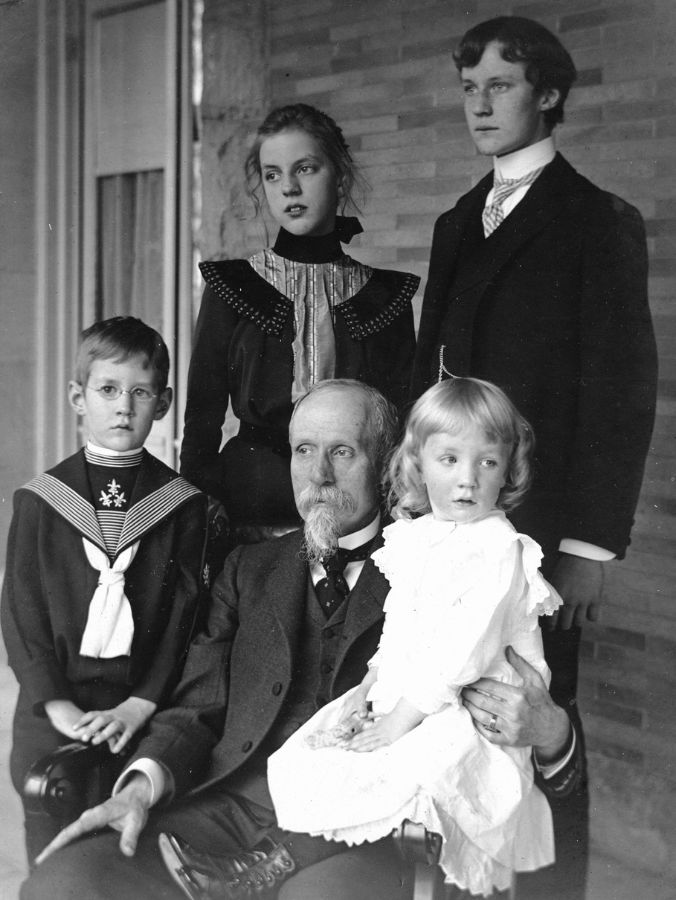-
Who We Are
Who We Are
For the last century, we’ve dedicated ourselves to empowering families like yours to prosper and endure. Like many of the leading families we serve, we have been through our own wealth journey.
Discover Pitcairn -
What We Do
Wealth Momentum®
The families we serve and the relationships we have with them are at the center of everything we do. Our proprietary Wealth Momentum® model harnesses powerful drivers of financial and family dynamics, maximizing the impact that sustains and grows wealth for generations to come.
Explore - Insights & News

Engaging the rising generation is one of the most important aspects of successful family philanthropy. Why wait until younger family members are in their 20s, 30s, or even 40s to show them how your family gives? Involving children, teens, and young adults in age-appropriate ways can make stewardship a natural part of life, teach important skills, and foster intergenerational bonds.
These best practices for next-gen philanthropy can help you build a stronger base to support your family’s giving legacy far into the future.
Educate the Youngest Generation
Even before they can correctly pronounce “phil-an-thro-py,” children can participate in your family’s endeavors. It starts with education.
Let’s say your family gives to the zoo. During a family meeting, an adult might spend some time with the youngest generation talking to them about how much it costs to feed and care for their favorite animals and explaining how your family helps meet those needs.
Another option is to ask children what problems they’ve observed in their community. Let them brainstorm ways to help, then talk about how your family could contribute to a solution.
Encouraging your children to notice others’ needs and assess how to meet them will make philanthropy second nature.
Respect Personal Passions
To keep children, adolescents, and young adults engaged, carve out space for them to pursue their own philanthropic passions.
Your family giving enterprise will be more likely to succeed if the next generation enjoys participating and feels they are individually making a difference — not just following a previous generation’s mandate.
Let’s say your family supports a local children’s hospital. Your teenager is more likely to be interested if they learn about the different types of patients the hospital serves, finds a way to identify with them, and comes up with their own ideas for how to help. If your son is an artist, maybe he can lead a painting workshop. If your daughter is interested in medicine, talk about how she can explore that interest while working with your family to further the hospital’s mission.
Establish Flexible Structures
One of the best ways to encourage next-gen participation in family philanthropy is through a flexible giving structure. Whether your family has a charitable trust, donor-advised fund, or private foundation, allocating funds to different causes and allowing family members to direct contributions can help everyone find a personally meaningful way to contribute.
For example, a family might collectively decide how to allocate the majority of that year’s total giving but also carve out a certain percentage to be directed by individual family members — without having to ask permission or seek approval.
Encourage Positive Communication
Even if families have total freedom to direct a portion of their family’s giving, they can remain accountable for their choices and learn about each other’s interests. For example, if a family lets their eldest daughter decide where a portion of its giving goes, she could be encouraged to make a presentation to the family on why she chose to support that cause, how the family might contribute its time, talent and treasure, and anticipated outcomes.
This arrangement can help the different generations interact with and learn from one another. Older generations can feel energized by learning about new giving opportunities and their grandchildren’s passions.
Younger generations can discover or be reminded of where their values intersect with those of their elders. At the same time, they can enjoy the freedom to express themselves through their giving while developing decision-making and presentation skills in a low-stakes setting. Your family’s philanthropic enterprise can serve as a training ground for learning about the value of money, governance, and leadership.
Allow for Evolution
We can’t know today what societal challenges future generations will want to address through charitable giving. How concerned were your great-grandparents about climate change? Our values are influenced by our family, peers, schools, jobs, and the environment we live in.
Still, a family’s core values tend to stay aligned across generations. The most successful philanthropic ventures anticipate the need to evolve while honoring what came before them.
You might, for example, set up a charitable giving vehicle to support more than one type of cause or category, but allow each successive generation to vote on changing up to two of those categories. That way, younger generations stay connected to the giving goals of prior generations, but they also don’t feel beholden to a cause they may no longer support — or that lacks the urgency it once did for the family. Establish points in time where family members can check in and ask, “Are our current charitable goals still working for us? Or should we redirect a portion of our giving?” Foster an environment of intergenerational family decision-making that’s collaborative and not adversarial.
Final Thoughts
Our increased life expectancies mean it’s now common to have three or four generations who can contribute to a family’s charitable endeavors. Failing to engage the youngest family members ignores a valuable family asset and increases the likelihood of rocky transitions when older family members pass on and younger family members are ill-equipped to fill their shoes.
Encourage children, teens, and young adults to involve themselves in your family’s giving in ways they find personally meaningful. By the time they’re old enough to participate in the family’s philanthropic decision-making, they’ll feel well equipped to continue their family’s legacy while making their own mark.
Disclaimer: Pitcairn Wealth Advisors LLC (“PWA”) is a registered investment adviser with its principal place of business in the Commonwealth of Pennsylvania. Registration does not imply a certain level of skill or training. Additional information about PWA, including our registration status, fees, and services is available on the SEC’s website at www.adviserinfo.sec.gov. This material was prepared solely for informational, illustrative, and convenience purposes only and all users should be guided accordingly. All information, opinions, and estimates contained herein are given as of the date hereof and are subject to change without notice. PWA and its affiliates (jointly referred to as “Pitcairn”) do not make any representations as to the accuracy, timeliness, suitability, completeness, or relevance of any information prepared by any unaffiliated third party, whether referenced or incorporated herein, and takes no responsibility thereof. As Pitcairn does not provide legal services, all users are advised to seek the advice of independent legal and tax counsel prior to relying upon or acting upon any information contained herein. The performance numbers displayed to the user may have been adversely or favorably impacted by events and economic conditions that will not prevail in the future. Past investment performance is not indicative of future results. The indices discussed are unmanaged and do not incur management fees, transaction costs, or other expenses associated with investable products. It is not possible to invest directly in an index. Projections are based on models that assume normally distributed outcomes which may not reflect actual experience. Consistent with its obligation to obtain “best execution,” Pitcairn, in exercising its investment discretion over advisory or fiduciary assets in client accounts, may allocate orders for the purchase, sale, or exchange of securities for the account to such brokers and dealers for execution on such markets, at such prices, and at such commission rates as, in the good faith judgment of Pitcairn, will be in the best interest of the account, taking into consideration in the selection of such broker and dealer, not only the available prices and rates of brokerage commissions, but also other relevant factors (such as, without limitation, execution capabilities, products, research or services provided by such brokers or dealers which are expected to provide lawful and appropriate assistance to Pitcairn in the performance of its investment decision making responsibilities). This material should not be regarded as a complete analysis of the subjects discussed. This material is provided for information purposes only and is not an offer to sell or the solicitation of an offer to purchase an interest or any other security or financial instrument.






